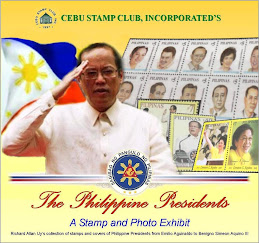Today in Philippine History (Philatelic Edition Series 3):
October 8, 2010
The United Nations Educational, Scientific and Cultural Organization (UNESCO) declared October 8 of every year as Dia Del Galleon celebration starting in 2010.
The Philippine proposal for the commemoration of the galleon trade between the Philippines and Mexico through the proclamation of a "Dia Del Galeon" was unanimously passed at the UNESCO General Conference in October 2009 in Paris.
It was made possible through the efforts of Senator Edgardo Angara and the Baler 400 Steering Committee headed by President Gloria Macapagal-Arroyo's Presidential Assistant on Culture, Cecile Guidote Alvarez with the National Commission for Culture and the Arts (NCCA) as lead agency and co-chaired by DepEd Usec. Vilma Labrador.
"History links the Philippines not just to Spain but also to Mexico and Latin-American countries. The common thread is the historic Galleon trade that linked Manila to Acapulco, Mexico. The Manila galleon became the lifeline for Philippine-Spanish-Latin American relations, sailing continuously for two and a half centuries - a record that no other shipping line has ever matched. It gave us a place in world history like no other economic feature of the country," said Angara.
Philippine Ambassador Rora Navarro-Tolentino officially and effectively presented the resolution with the co-sponsorship of Mexico, Spain, Cuba, Colombia, Peru, and Paraguay. Thailand and Laos led the ASEAN region support while Sweden spoke for Europe.
The October 8 Dia Del Galeon annual celebration coincides with the day the San Pedro, piloted by Fray Andres de Urdaneta reached Acapulco in 1565 and was called the "Tornaviaje" or return journey.
This was the beginning of the Manila-Acapulco route that linked the people of Asia, America, Europe and Africa.
The commemorative activities of the first International Dia del Galeon Festival held in the Philippines was from September 15 to October 15, 2010, and culminated in a grand celebration in Paris.
(Design, concept, stamps and research: Richard Allan B. Uy) All rights reserved
Photo credit: NCCA page


















No comments:
Post a Comment